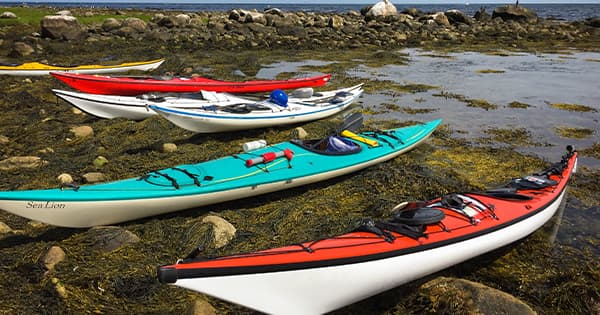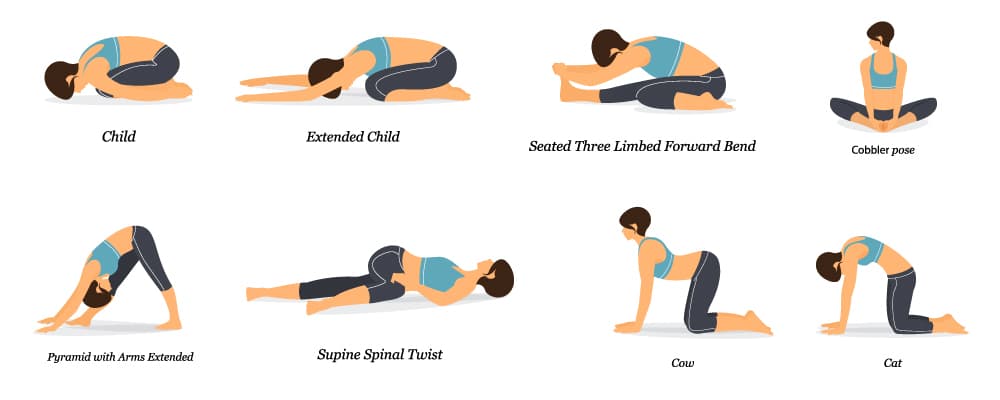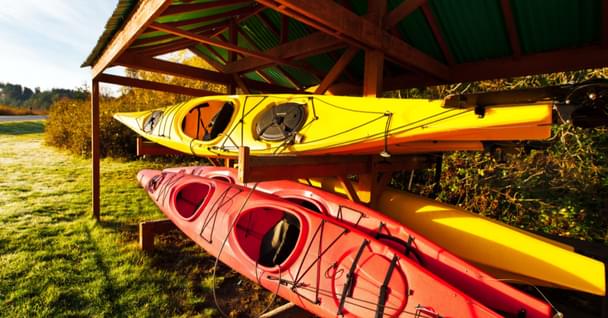How to Overcome Flexibility Issues When Kayaking
Flexibility is always a good topic of discussion when it comes to kayaking. Depending on our style of paddling, sometimes we might squeeze ourselves into the tightest of fits, or contort our bodies to have the maximum control possible over the kayak. But is this necessary for all types of paddling? Are there things we could do to help us along the way? Hopefully this will be an interesting discussion on the topic with a few possible takeaways on things to consider when it comes to flexibility.
I’ll be the first to tell you, I’m not flexible. Without fail, improving my flexibility is always on my new year’s resolution list. I embrace it as a long-term goal, as I have seen so many benefits and improvements in my paddling when I work on it. From having an easier time sitting for long periods of time in my kayak, to a smoother roll, when I dedicate time to my flexibility my body certainly rewards me out on the water.
Is your kayak right for you?
Let’s first tackle an area worth mentioning that sometimes isn’t the easiest to discuss. I’ve found that sometimes flexibility issues in kayaking can arise with newer paddlers because of the particular kayak they use. Our first kayak may be a hand-me-down from a friend or family member. Or a great find at a garage sale, or event. Regardless of where the kayak comes from, sometimes our first access to the water doesn’t necessarily mean we might have the perfect fit for our bodies – and in my opinion, comfort and flexibility go hand in hand.

If you’re having a tough time on the water, first consider if the kayak you are using is well suited for your body. Just as we might consider certain aspects of a kayak for different styles of paddling – large storage for expeditions, low volume for rolling, shorter waterlines for playfulness – does your kayak fit your level of comfort and flexibility? If you have trouble getting in and out, would a larger cockpit be a better option? If you have back issues, would a better seat, back rest, or back band make your time on the water more enjoyable? What about your legs and feet – is your current setup a comfortable position with good contact for your thighs and feet? We can discuss flexibility all day long, but let’s also consider at the core of the matter if your kayak is the right choice for your body.
Please don’t take this part of the discussion as me saying a top-of-the-line, brand new kayak is needed. You’d be surprised how many affordable, used gems are discovered by paddling with groups, friends, attending events or meetups. Local outfitters will often have “demo days” where they allow paddlers to test different kayaks and might even have some of their used fleet kayaks for sale. I think it’s always worth trying out different makes and models to see if there might be one that best suits your needs and provides the most comfort and ease of use.
Getting in and out of the kayak
As I mentioned, one thing I’ve found many times is newer paddlers coming to a class or an event with a kayak that is not suited for their body or style of paddling they wish to do. So, if you’re having a tough time getting in and out of the kayak, before doing anything else, find out if it might simply be that the kayak is not the right choice for you.
Now, one of the ways of getting in and out of a kayak is to always have 3 points of contact (like a tripod) to maximize stability as you get in and out – especially with lower flexibility. So that means for example, two hands and a foot on the ground keeping you stable while the other foot/leg slides in or out of the kayak. Or two hands and your butt keeping you stable while each foot/leg slides in or out. Going back to my previous point, does your kayak cockpit allow you to easily remain stable while you get in or out? Next time you’re out with friends or with a group, look at all the other cockpits around – maybe a different style of cockpit might provide an easier time getting in and out.
I certainly have an easier time getting into a kayak with a large cockpit (or at least keyhole shaped) that allows me to first have a foot on either side of the kayak, then sitting down in the seat, and finally having enough room to bring one leg in, and then the other. You can also remember to use your paddle to help you stabilize the kayak while you bring your legs in – whether with a bit of slow sculling for support or being ready for a low brace on either side.
On the other hand, one of my kayaks has an ocean cockpit (small, circular opening) – this one certainly makes getting in and out a bit tougher. For smaller cockpits, maybe the kick-stand method can be of use. You can place the paddle across the back deck right at the edge of the cockpit’s rim and grasp it firmly so your hand holds the rim of the cockpit and paddle shaft at the same time. With the paddle extended to one side, see if you can rest it on the shore, ramp, or anything stable that can allow you to remain steady as you get in and out as long as you keep using the paddle for support. Keep in mind not putting too much pressure or hurting the paddle while you do this!
YOGA! And stretching…
Let’s talk stretching. The one thing I’ve heard over and over from kayakers everywhere is how yoga has helped their paddling. And I will add my voice to that as well. To be honest, I’m terrible at it and I cheat all the time! But I see huge improvements in my flexibility when I manage to do it with consistency. It doesn’t matter at what level, every little bit helps. So, if you’ve never tried yoga before, it might be worth looking into it. It can be at a studio or at home with family or friends, or even just by yourself. Overall, beginner yoga routines can certainly help improve flexibility.
If you wanted to just do some stretches, here’s a short list with a couple that I’ve found very useful. These have helped me in my paddling, getting in and out of a kayak, or just with overall mobility. Please feel free to add any others that might help turn it into a routine that could possibly work for you.

- Child’s Pose
- One-Legged Forward Bend
- Cobbler’s Pose
- Pyramid Pose (can be done with hands on hips instead of on the ground)
- Supine Spinal Twist
- Cat-Cow Pose
*Note that there are variations of each pose suited for different skill levels. Always do the variation that feels comfortable for you.
Luke Rovner (Kayak Hipster) is a sea kayak instructor, photographer and filmmaker. Combining his experience as a photo and video professional with a love for kayaking, he started Kayak Hipster with the goal of capturing outdoor adventures and sharing kayaking tips.
Related Articles
Kayak Hipster demonstrates and shares 3 things to try next time you're working on your low brace. The…
So, you’ve got your new kayak this season. You figured out how to transport it. Figured out how to pack…
In this video, Ken Whiting of PaddleTV talks about the different pains associated with kayaking, and…
As kayakers we have the unique ability to spend a lot of time close to water and observe the qualities…



